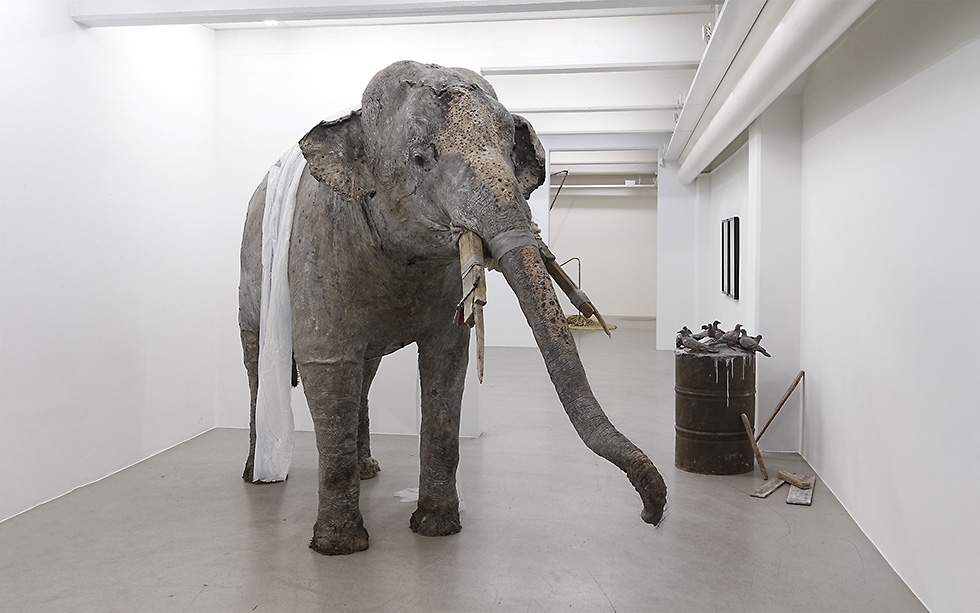Immediately upon entering the space, viewers will face an imposing, full-scale elephant, titled Grace and Glory. It seems to be searching curiously with its proboscis, while assessing the surroundings with a wise gaze. Something plastic-like hangs over the back. Wooden sticks and metal act as prostheses, instead of grazers. Its majestic charisma emanates melancholy and fragile elegance, further enhanced by a very noticeable presence. At the same time, Grace and Glory appears as a fragment of memory, from a past world that has already been left behind.
Through this presentation, the artist addresses the complex duality of man’s encounter with nature. Furthermore, Persson allows nature itself to shape this ongoing struggle between man’s conflicting behaviours. A strong opposition is brought to light by humanity’s contrasting actions: the desire to grow and save, versus the awareness of harming, manipulating, and destroying.
Roland Persson’s lifelike sculptures – made from silicone, bronze, and aluminium – give the viewer an initial impression of living and organic bodies. Soon, however, small, unexpected clues emerge, bringing disorder and making the viewer question the reality before themselves.
Persson’s oeuvre examines and tries to understand “our” changing perceptions and expectations of nature, in relation to emotions, sexuality, politics, fears, and death. Hence, the works can be seen as a study of humankind itself. Silicone becomes the material of choice, due to its intrinsic ability to blend with pigment. Additionally, the elasticity and mobility of the material further contribute to a shifted perception. Through these elaborate explorations, and somewhere in the gap between motif and execution, it becomes difficult to distinguish reality from fiction.




